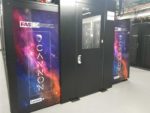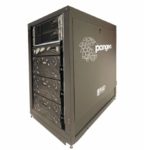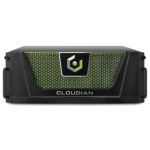Following a procurement exercise, UK Research and Innovation (UKRI) are pleased to announce that Cray, an HPE company, has been awarded the contract to supply the hardware for the next national supercomputer, ARCHER2. Powered by AMD EPYC processors, ARCHER2 will be deployed at the University of Edinburgh. “Needless to say, ARCHER2 represents a significant step forwards in capability for the UK science community, with the system expected to sit among the fastest fully general purpose (CPU only) systems when it comes into service in May 2020.”
Harvard Names New Lenovo HPC Cluster after Astronomer Annie Jump Cannon
Harvard has deployed a liquid-cooled supercomputer from Lenovo at it’s FASRC computing center. The system, named “Cannon” in honor of astronomer Annie Jump Cannon, is a large-scale HPC cluster supporting scientific modeling and simulation for thousands of Harvard researchers. “This new cluster will have 30,000 cores of Intel 8268 “Cascade Lake” processors. Each node will have 48 cores and 192 GB of RAM.”
Video: What Can HPC on AWS Do?
Ian Colle from Amazon gave this talk at the HPC User Forum. “AWS provides the most elastic and scalable cloud infrastructure to run your HPC applications. With virtually unlimited capacity, engineers, researchers, and HPC system owners can innovate beyond the limitations of on-premises HPC infrastructure. AWS delivers an integrated suite of services that provides everything needed to quickly and easily build and manage HPC clusters in the cloud to run the most compute intensive workloads across various industry verticals.”
Use Cases for HPC in the Cloud
In this special guest feature, Robert Roe from Scientific Computing World looks at use cases for cloud technology in HPC. “In previous years there have been some concerns around security or the cost of moving data to and from the cloud, but these reservations are slowly being eroded as more users see value in developing a cloud infrastructure as part of their HPC resource.”
Raid Inc. Partners with Whamcloud for Turnkey Lustre on ZFS Appliance
Today RAID Incorporated announced the launch of Pangea, the first turnkey Lustre on ZFS appliance in the market. “RAID Inc. has partnered with Whamcloud to provide this preconfigured, highly available software stack for Lustre. Easy to manage, this stack ensures systems won’t breakdown. Pangea is also fully supported by RAID Inc. and Whamcloud for deployments of all sizes.”
University of Leicester Adopts Cloudian Object Storage for Backup
Today Cloudian announced that the University of Leicester has deployed the company’s HyperStore object storage system as the foundation of a revamped backup platform. The new solution requires 50% less space and, once fully implemented, is expected to save approximately 25% in data storage costs. “Today Cloudian announced that the University of Leicester has deployed the company’s HyperStore object storage system as the foundation of a revamped backup platform. The new solution requires 50% less space and, once fully implemented, is expected to save approximately 25% in data storage costs.”
DAOS: Scale-Out Software-Defined Storage for HPC/Big Data/AI Convergence
As an all-new parallel file system, DAOS will be a key component of the the upcoming Aurora supercomputer coming to Argonne National Laboratory in 2021. “DAOS is an open source software-defined scale-out object store that provides high bandwidth, low latency, and high I/O operations per second (IOPS) storage containers to HPC applications. It enables next-generation data-centric workflows that combine simulation, data analytics, and AI.”
Fujitsu to Deploy Gadi Supercomputer at NCI in Australia
Today Fujitsu announced a contract to upgrade the Australia’s fastest supercomputer at NCI. Called “Gadi,” the new supercomputer will replace the NCI’s current supercomputer, Raijin, which was also provided by Fujitsu back in 2012. “The upgrade of this critical infrastructure will see Australia continue to play a leading role in addressing some of our greatest global challenges. This new machine will keep Australian research and the 5,000 researchers who use it at the cutting-edge.”
Video: Lustre, RoCE, and MAN
Marek Magryś from Cyfronet gave this talk at the DDN User Group. “This talk will describe the architecture and implementation of high capacity Lustre file system for the need of a data intensive project. Storage is based on DDN ES7700 building block and uses RDMA over Converged Ethernet as network transport. What is unusual is that the storage system is located over 10 kilometers away from the supercomputer. Challenges, performance benchmarks and tuning will be the main topic of the presentation.”
DDN EXA 5: Innovation at Scale
James Coomer gave this talk at the DDN User Group meeting in Frankfurt. “EXA5 brings our customers a whole new level of experience based on the Lustre filesystem. With huge performance boosts, better scaling properties and a strong appliance approach, this is Lustre like you’ve never seen it before. Fully featured, native file management, strong security, data integrity, container integration and a load more. James will talk about the major new features in EXA5 and about how we manage flash for complex and difficult use cases.”













